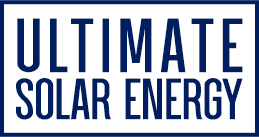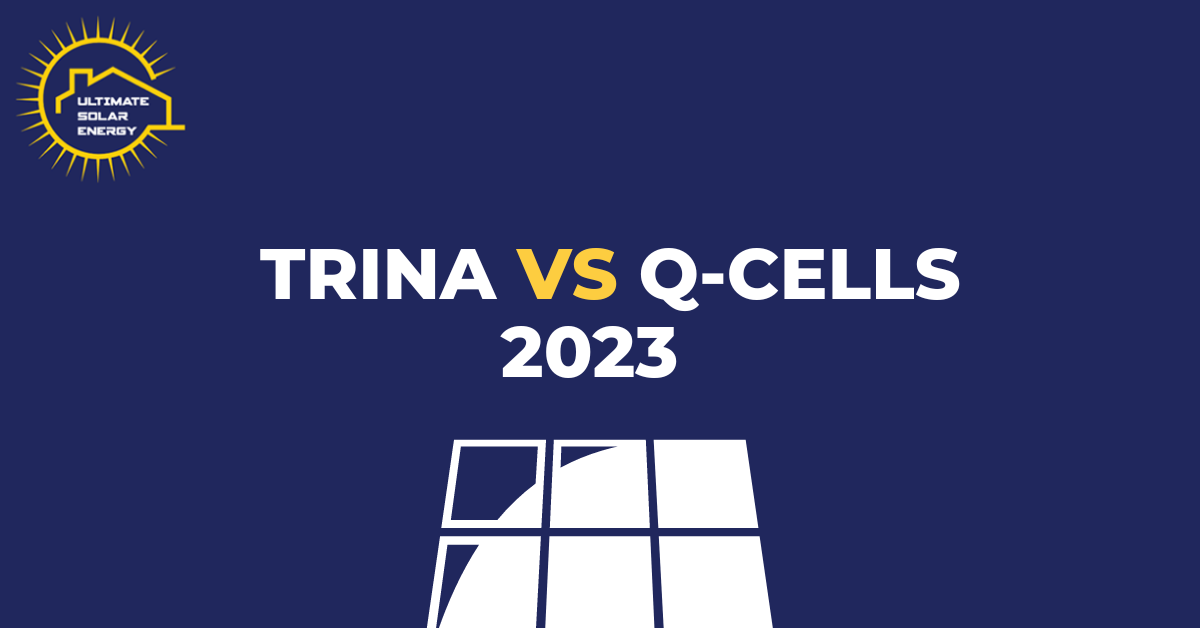Trina v/s Q-cells 2023
Trina v/s Q-cells 2023

Trina Solar and QCells are two prominent players in the solar panel industry, each renowned for their innovative and high-quality products. With the growing global demand for renewable energy solutions, the competition between these two companies has intensified as they strive to offer the most efficient and reliable solar panels to solar consumers.
To make things easier for our readers, we have compared both brands exhaustively with their features, performance, and key differentiators of Trina Solar panels versus QCells panels, assisting solar consumers in making an informed decision for their solar energy needs.
Panel Efficiency
Solar panel efficiency pertains to the ability of solar photovoltaic cells to capture and convert sunlight into electricity. When comparing solar panels of equal size under identical conditions, a higher-efficiency solar panel will generate generous electricity than a panel with lower efficiency. Therefore, most consumers opt for solar panels with a higher efficiency rating.
Trina Solar Panels
Trina solar panels’ efficiency varies depending on the specific model. Across Trina Solar’s range of solar products, the panels possess efficiency ratings ranging from 16.2% to 20.4%.
QCells Solar Panels
The efficiency of Q CELLS solar panels is subject to variation based on the specific model chosen for your system. Within the comprehensive range of Q CELLS products encompassing residential and commercial applications, solar panels are available with efficiency ratings ranging from 17.4% to 21.4%. Generally, most Q CELLS panels fall within the moderate efficiency range for solar panels. However, solar panels with an 18% or higher efficiency rating are considered “high efficiency.” Notably, the Q CELLS BLK lines exhibit efficiency ratings between 19.5% and 20.9%, placing them within the high-efficiency category.
Panel Performance
Generally, solar panel performance evaluates through the temperature coefficient. It serves as an indicator of the panel’s ability to handle suboptimal conditions.
The temperature coefficient provides insight into the extent of performance changes on hot and sunny summer days. With each degree rise above 25°C (77°F), a solar panel’s electricity production decreases according to its temperature coefficient. Considering that solar panels will encounter numerous hot and sunny days throughout the year, they should have the lowest possible temperature coefficient.
Trina Solar Panels
Trina Solar panels exhibit temperature coefficients ranging between -0.41 and -0.36.
QCells Solar Panels
The Q CELLS BLK panel series presents panels with a temperature coefficient rating of -0.34.
Warranties
A solar panel’s materials warranty, also known as the equipment or product warranty, is a manufacturer’s assurance that they will replace the panel in the event of failure caused by manufacturing defects or environmental factors.
Trina Solar Panels
Trina Solar provides a warranty of up to 25 years on specific models of their solar panels to cover any potential defects.
QCells Solar Panels
Q CELLS provides a comprehensive 25-year warranty for all their panels, demonstrating their confidence in their solar panels’ quality and longevity. This warranty encompasses both the materials and the power output of the panels.
Cost
The cost factor often plays a crucial role for many solar consumers when making the final purchase decision regarding the solar equipment they select.
Trina Solar Panels
Trina Solar systems are commonly priced in the range of $2.31 to $3.39 per watt, positioning them as a favorable value in the residential solar market. As a result, for a 6 kW system, the total cost (before deducting any tax credits or incentives) would amount to approximately $13,860 to $20,340.
QCells Solar Panels
Q CELLS systems generally cost between $2.56 to $3.32 per watt, establishing Q CELLS as one of the leading options for cost-effective home solar solutions. Consequently, for a 6 kW system, the total cost (before factoring in any tax credits or incentives) would fall within the range of approximately $15,360 to $19,920. However, it is worth noting that many homeowners often pay significantly less than the overall gross cost.

Trina Solar Panels
Pros
- Trina Solar has a well-established presence in the Australian market.
- It is recognized for surpassing the standard warranty terms and ensuring compliance with Australian consumer law.
- Trina Solar has provided guidance stating that customers who may have been left without support can submit panel warranty claims through their accessible online portal.
- Trina Solar is distinguished as one of the few companies that provide dual glass panels, which are inherently more durable in nature.
Cons
- Upon reviewing the warranty documents, it has been found that the warranty provided by Trina Solar is relatively standard or ordinary.
QCells Solar Panels
Pros
- QCells Solar is widely recognized as a Tier 1 manufacturer.
- The company possesses extensive experience in the field of solar PV, inverters, and batteries.
- QCells solar panels are constructed with robust frames, offering durability and stability. They feature broad clamp zones, allowing for flexible and secure mounting options.
- 25-year linear performance and product and warranty.
- Available in various sizes with easier-to-handle widths
- Cost-effective
- Salt mist deterioration resistant.
Cons
- Larger models (100mm or wider) are difficult to handle
- Black frames become hotter in summers
The Bottom Line
When it comes to which brand one should buy QCells or Trina solar panels? It is recommended to review multiple quotes featuring various solar equipment options. Comparing different options allow solar users to find the ideal balance of price and quality that aligns with their requirements.
At Ultimate Solar Energy, we make your decision-making process so simple. We design customized solutions based on your requirements, using only the most premium products.
Get a Free Quote now!

